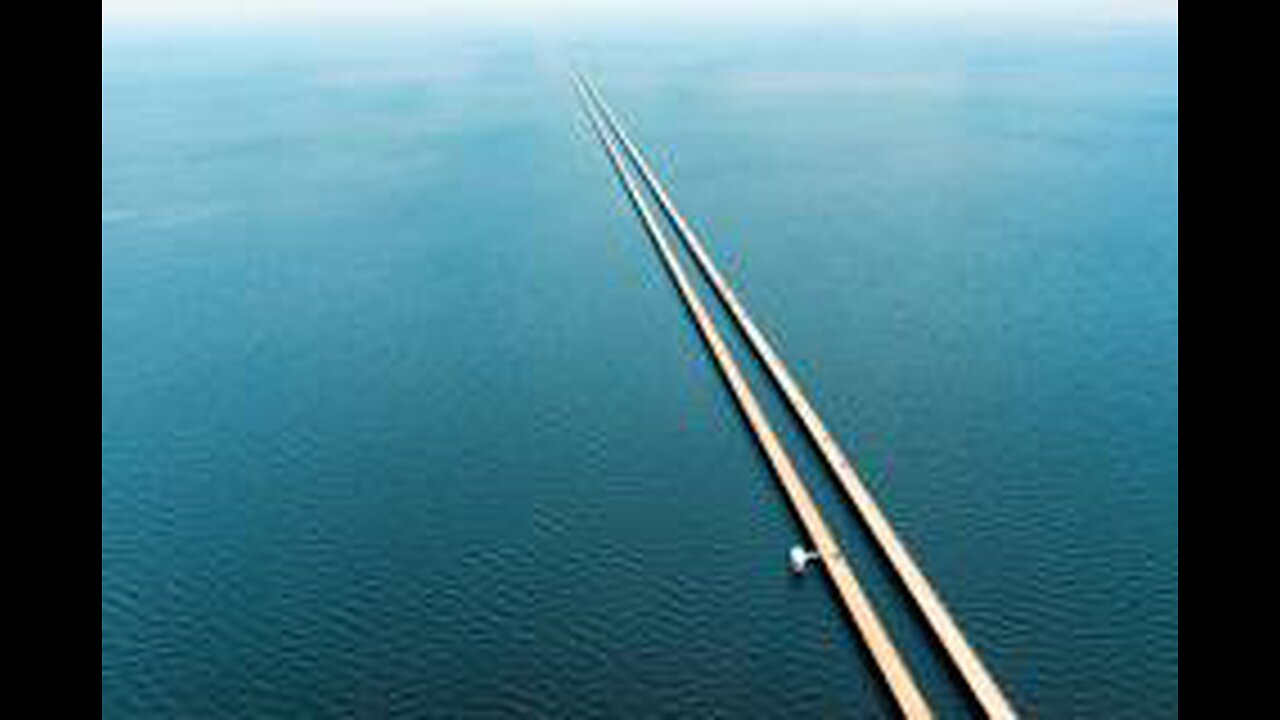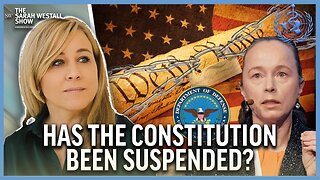Premium Only Content

Crossing the Lake Pontchartrain Causeway Northbound
Business.
Lake Pontchartrain Causeway
Lake Pontchartrain Causeway south.jpg
The southern end of the causeway at Metairie, Louisiana, in 1998
Coordinates 30°11′59″N 90°07′22″W
Carries 4 lanes of Causeway Boulevard
Crosses Lake Pontchartrain
Locale Metairie and Mandeville, Louisiana, U.S.
Other name(s) The Causeway
Maintained by Causeway Commission
Characteristics
Design Low-level trestle with mid-span bascule
Total length 23.875 mi (38.442 km)
Clearance above 15 ft
History
Opened August 30, 1956 (southbound)
May 10, 1969 (northbound)
Statistics
Daily traffic 43,000[1]
Toll $5.00 (southbound)
Location
MapWikimedia | © OpenStreetMap
The Lake Pontchartrain Causeway (French: Chaussée du lac Pontchartrain), also known simply as The Causeway,[2] is a fixed link composed of two parallel bridges crossing Lake Pontchartrain in southeastern Louisiana, United States. The longer of the two bridges is 23.83 miles (38.35 km) long. The southern terminus of the causeway is in Metairie, Louisiana, a south shore suburb of New Orleans. The northern terminus is in Mandeville, Louisiana, a north shore suburb of New Orleans.
From 1969 until 2011, it was listed by Guinness World Records as the longest bridge over water in the world; in 2011, in response to the opening of the longer Jiaozhou Bay Bridge in China, Guinness World Records created two categories for bridges over water: continuous and aggregate lengths over water. Lake Pontchartrain Causeway then became the longest bridge over water (continuous),[3] while Jiaozhou Bay Bridge the longest bridge over water (aggregate).[4]
The bridges are supported by 9,500 concrete pilings.[5] The two bridges feature a bascule, which spans the navigation channel 8 miles (13 km) south of the north shore.
History
The idea of a bridge spanning Lake Pontchartrain dates back to the early 19th century and Bernard de Marigny, the founder of Mandeville. He started a ferry service that continued to operate into the mid-1930s. In the 1920s, a proposal called for the creation of artificial islands that would then be linked by a series of bridges. The financing for this plan would come from selling home sites on the islands. The modern causeway started to take form in 1948 when Ernest M. Loëb Jr. envisioned the project. Due to his lobbying and vision, the Louisiana Legislature created what is now the Causeway Commission. The Louisiana Bridge Company was formed to construct the bridge, which in turn appointed James E. Walters Sr. to direct the project.[6] Ernest M Loëb was assisted by his nephew, Ernest M. Loëb III, president of Ernest M. Loëb & Company to plan the construction of the bridge[7]
-
 16:48
16:48
Tundra Tactical
2 hours agoAffordable Medical Gear From ACETAC SHOT Show 2025
3.58K1 -
 1:46:16
1:46:16
Redacted News
5 hours agoRFK CONFIRMATION: Kennedy goes to WAR with Big Pharma Democrats in Fiery Hearing | Redacted Live
129K309 -
 57:31
57:31
Candace Show Podcast
5 hours agoBREAKING! Taylor Swift Turns Against Blake Lively & Ryan Reynolds | Candace Ep 141
146K168 -
 1:04:59
1:04:59
Sarah Westall
2 hours agoRFK Jr Report, Constitution Suspended, War Time Procedures in Place, WHO Exit, DOD w/ Sasha Latypova
14.5K10 -
 1:56:37
1:56:37
Melonie Mac
6 hours agoGo Boom Live Ep 35!
28K9 -
 1:01:13
1:01:13
LFA TV
10 hours agoPRESIDENT TRUMP SIGNS LAKEN RILEY ACT | BASED AMERICA 1.29.25 6pm
42K6 -
 1:43:07
1:43:07
2 MIKES LIVE
3 hours ago2 MIKES LIVE #172 News Breakdown Wednesday!
16.4K2 -
 1:26:16
1:26:16
The Big Mig™
5 hours agoJ6’r Ryan Samsel Free At Last The BOP & DOJ Exposed
18.3K3 -
 31:34
31:34
The Based Mother
5 hours ago $0.70 earnedEXECUTIVE ORDER MUTILATES GENDER IDEOLOGY! Trump’s pulling out all the stops.
9.44K2 -
 1:05:44
1:05:44
The Amber May Show
22 hours ago $0.95 earnedSaving The Innocence | Rescuing Children From Rape Trafficking | Alan Smyth
15.4K3